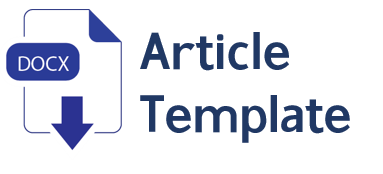Applying Importance Performance Analysis (IPA) Method in Analyzing Level of Service Quality
DOI:
https://doi.org/10.30741/adv.v5i2.779Keywords:
Service Quality, Gap Analysis, Importance Performance Analysis (IPA)Abstract
The more the startups are established in Indonesia, the higher the competition for companies in offering their products and services to customers. In overcoming increasingly fierce business competition, Bliin always makes efforts to improve the quality of service on its application with the aim of creating customer satisfaction. This research employed a descriptive, quantitative method. The population in this study comprises the users of Bliin application who have made transactions and live in Bandung City. the sample used amounted to 191 respondents. The data were collected through questionnaires. The analysis method used the Gap analysis and Importance Performance Analysis (IPA). Based on the Gap analysis method, the overall Gap average value shows the results (-0.43) However, from the overall value per attribute item, almost all attributes are negative. There are only three attribute items that are positive. On the overall average value of the level of performance of (3.73) is smaller than the level of importance or expectation of (4.16). This indicates that the perceived service < the expected service which means that the perceived performance is not as expected. From the results of the IPA analysis method on the Cartesian diagram mapping, there are 9 attributes in quadrant I (high importance and low performance) and 8 attributes in quadrant II (high importance and high performance).
Downloads
References
Andayani, S. (2018). Metode Importance Performance Analysis (IPA) untuk Menentukan Harapan Konsumen Toko Online Terhadap Kualitas Layanan Website. Prosiding SNST Ke 9, 13–18. https://www.publikasiilmiah.unwahas.ac.id/index.php/PROSIDING_SNST_FT/article/view/2361
Apriliani, D., Fikry, M., & Hutajulu, M. J. (2020). Analisa Metode Webqual 4.0 dan Importance-Performance Analysis (IPA) Pada Kualitas Situs Detik.com. Jurnal Ilmiah Merpati (Menara Penelitian Akademika Teknologi Informasi), 8(1), 34–45. https://ojs.unud.ac.id/index.php/merpati/article/view/58939
Brochado, A. (2009). Comparing alternative instruments to measure service quality in higher education. Quality Assurance in Education, 17(2), 174–190. https://doi.org/10.1108/09684880910951381
Caruana, A. (2002). Service loyalty : The effects of service quality and the mediating role of customer satisfaction. European Journal of Marketing, 36(7/8), 811–828. https://doi.org/10.1108/03090560210430818
Caruana, A., Money, A. H., & Berthon, P. R. (2000). Service quality and satisfaction – the moderating role of value. European Journal of Marketing, 34(11/12), 1338–1353. https://doi.org/10.1108/03090560010764432
Chandra, T., & Novia, D. (2019). Analisis Kualitas Pelayanan dan Kepuasan Pelanggan Menggunakan Metode Customer Satisfaction Index (CSI) dan Importance Performance Analysis (IPA) pada Optik “Jakarta” Pekanbaru. Procuratio: Jurnal Ilmiah Manajemen, 7(2), 125–139.
Deo, P. G. E., Sanjaya, R., & Linda, L. (2017). Analisis Kualitas Layanan Lazada Dengan Menggunakan Metode E-Servqual Dan IPA. Journal of Accounting and Business Studies, 2(1), 1–19.
Hidayati, N., Hanif, R., & Pradesa, H. A. (2016). The Influence of Service Quality and Sense of Belonging toward Members ’ Participation in Co-operative Enterprise. IOSR Journal of Business and Management (IOSR-JBM), 18(7), 56–65. https://doi.org/10.9790/487X-1807025665
Kalijogo, F. M. (2019). Analisis Kualitas Pelayanan Pasien Klinik Pratama Dengan Metode Servqual Dan Importance Performance Analysis. Jurnal Ekonomi, Bisnis, Dan Akuntansi, 21(3). https://doi.org/10.32424/jeba.v21i3.1366
Kitapci, O., Akdogan, C., & Dortyol, İ. T. (2014). The Impact of Service Quality Dimensions on Patient Satisfaction, Repurchase Intentions and Word-of-Mouth Communication in the Public Healthcare Industry. Procedia - Social and Behavioral Sciences, 148, 161–169. https://doi.org/10.1016/j.sbspro.2014.07.030
Lasyakka, B. (2015). Faktor-Faktor Kualitas EService Yang Berpengaruh Terhadap Perceived Value Pada Website ECommerce Lazada.CO.ID (Studi Pada Warga Lingkungan Rw. 3 Kelurahan Dinoyo Kecamatan Lowokwaru Kota Malang). Jurnal Administrasi Bisnis S1 Universitas Brawijaya, 24(2), 1–5.
Lee, H., Lee, Y., & Yoo, D. (2000). The determinants of perceived service quality and its relationship with satisfaction. Journal of Services Marketing, 14(3), 217–231. https://doi.org/10.1108/08876040010327220
Novira, A., Priatna, R., & Pradesa, H. A. (2020). Pengaruh Dimensi Kualitas Layanan terhadap Kepuasan Pengguna Layanan Kesehatan Puskesmas di Kabupaten Sumedang Tahun 2019. JEMAP: Jurnal Ekonomi, Manajemen, Akuntansi, Dan Perpajakan, 3(2), 288–302.
Oh, H. (1999). Service quality, customer satisfaction, and customer value: A holistic perspective. International Journal of Hospitality Management, 18(1), 67–82. https://doi.org/10.1016/s0278-4319(98)00047-4
Parasuraman, A., Zeithaml, V. A., & Berry, L. L. (1988). SERVQUAL: a multiple-item scale for measuring consumer perceptions of service quality. Journal of Retailing, 64(1), 12–40.
Parasuraman, A., Zeithaml, V. A., & Berry, L. L. (1991). Refinement and reassessment of the SERVQUAL scale. Journal of Retailing, 67(4), 420–450.
Parasuraman, A., Zeithaml, V. A., & Berry, L. L. (1994). Reassessment of Expectations as a Comparison Standard in Measuring Service Quality: Implications for Further Research. Journal of Marketing, 58(1), 111. https://doi.org/10.2307/1252255
Prakash, G. (2019). Understanding service quality: insights from the literature. Journal of Advances in Management Research, 16(1), 64–90. https://doi.org/10.1108/JAMR-01-2018-0008
Sharabi, M. (2013). Managing and improving service quality in higher education. International Journal of Quality and Service Sciences, 5(3), 309–320. https://doi.org/10.1108/IJQSS-03-2013-0016
Sulistyan, R. B., Pradesa, H. A., & Kasim, K. T. (2017). Peran Mediasi Kepuasan Dalam Pengaruh Kualitas Pelayanan Dan Citra Institusi Terhadap Retensi Mahasiswa. Wiga : Jurnal Penelitian Ilmu Ekonomi, 7(2), 77–78. https://doi.org/10.30741/wiga.v7i2.337
Wong, A., & Sohal, A. (2003). Service quality and customer loyalty perspectives on two levels of retail relationships. Journal of Services Marketing, 17(5), 495–513. https://doi.org/10.1108/08876040310486285
Yang, Z., & Fang, X. (2004). Online service quality dimensions and their relationships with satisfaction: A content analysis of customer reviews of securities brokerage services. International Journal of Service Industry Management, 15(3), 302–326. https://doi.org/10.1108/09564230410540953
Yousif, A. S. H. (2015). E-Service Quality : a Multi-Dimension Perspective. International Journal of Economics, Commerce and Management, III(11), 873–888.
Zeithaml, V. A., Parasuraman, A., & Malhotra, A. (2002). Service quality delivery through web sites: A critical review of extant knowledge. Journal of the Academy of Marketing Science, 30(4), 362–375. https://doi.org/10.1177/009207002236911
Downloads
Published
How to Cite
Issue
Section
License
Copyright (c) 2022 Firda Auliawati Nuraieni, Nanda Ravenska, Hafid Aditya Pradesa

This work is licensed under a Creative Commons Attribution-NonCommercial 4.0 International License.










